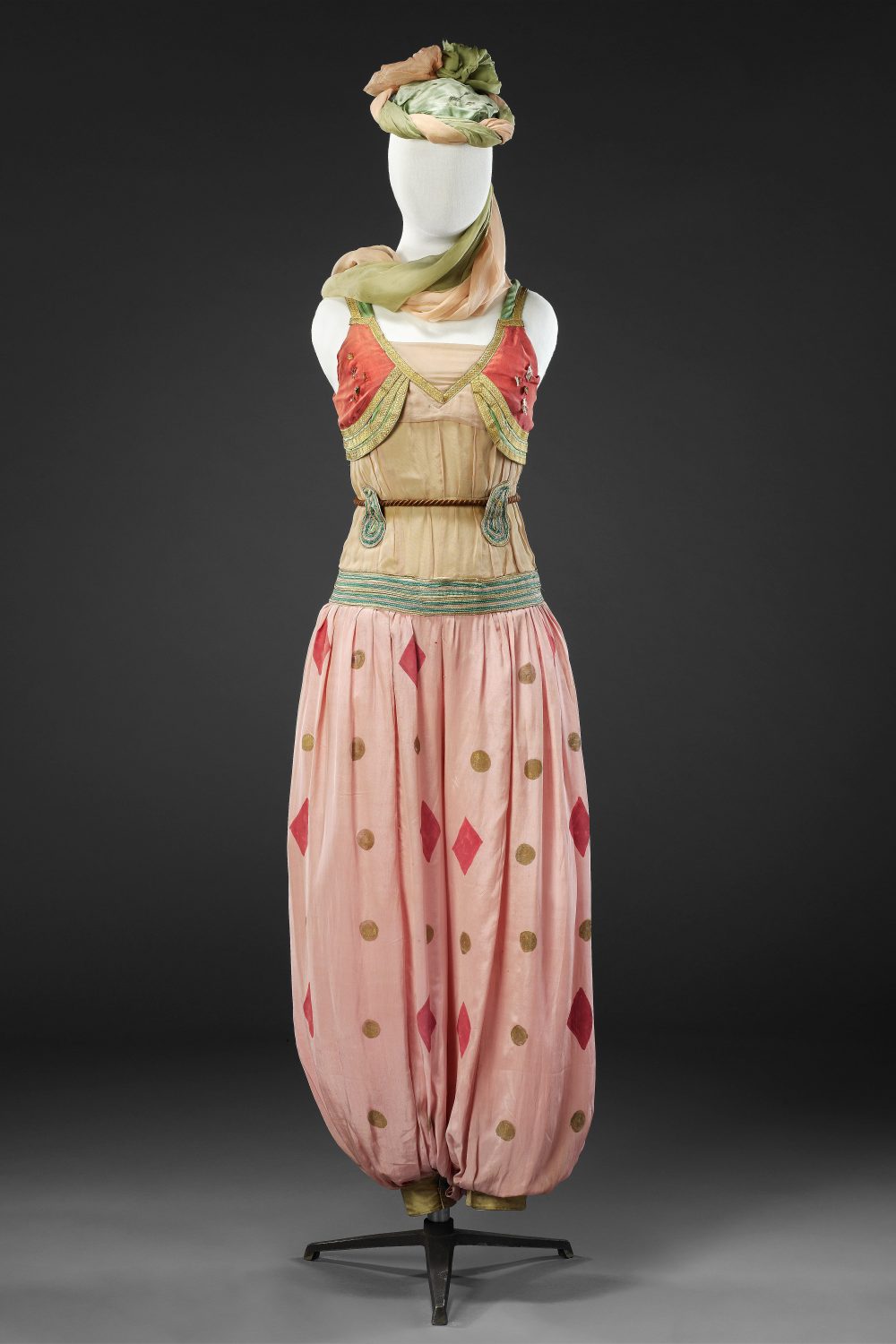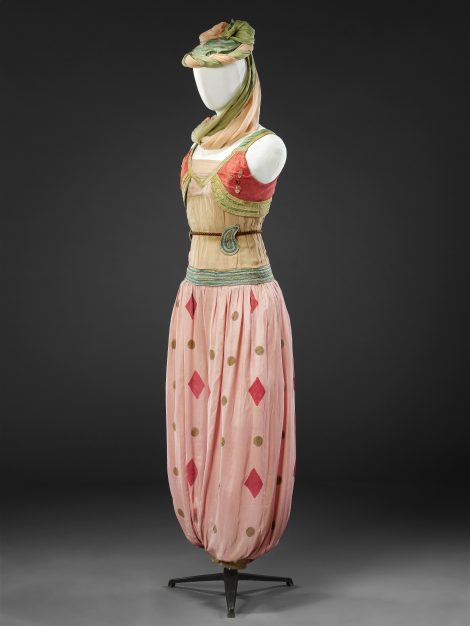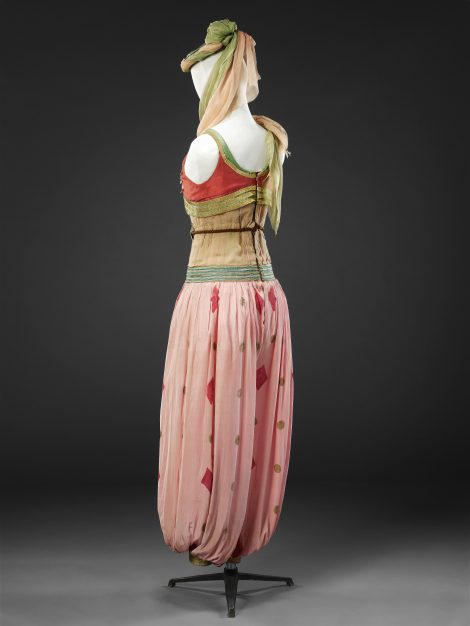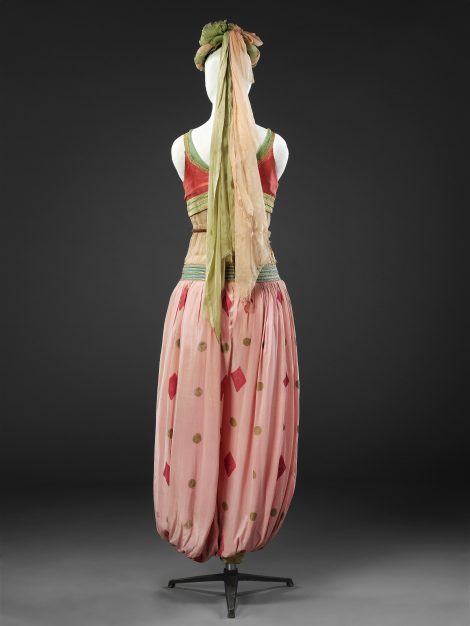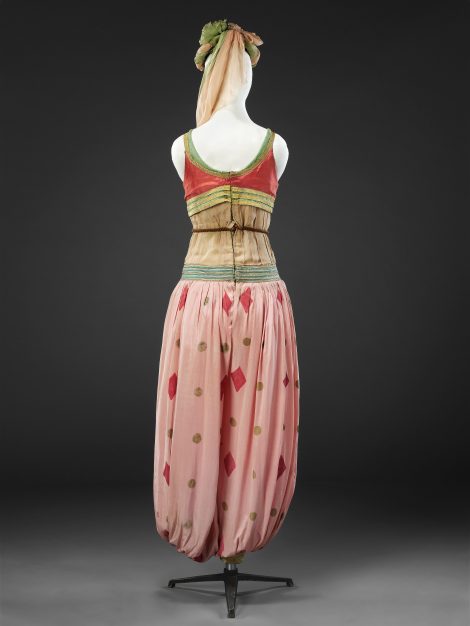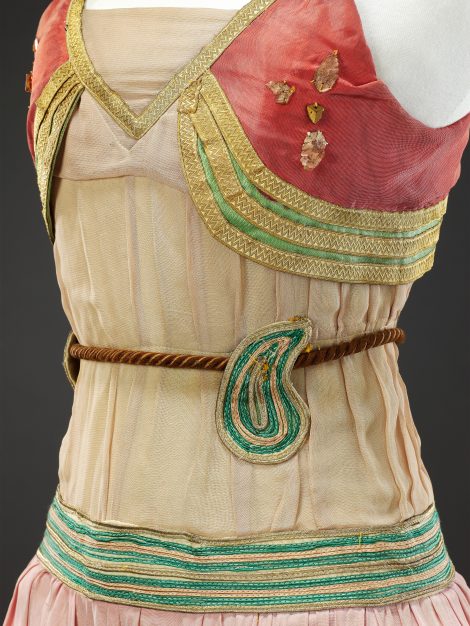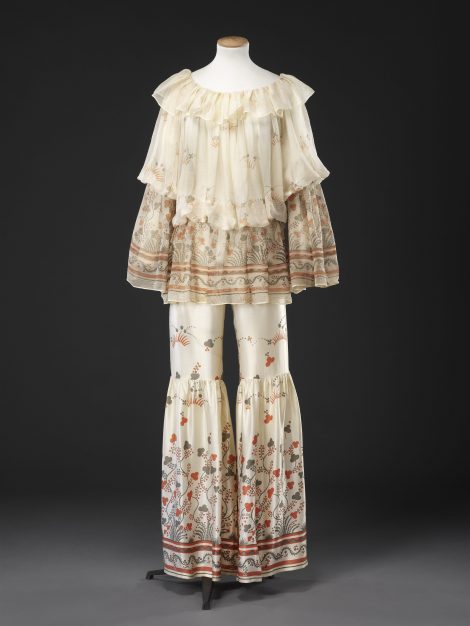The Ballets Russes Company, under the direction of impresario Serge Diaghilev, had a major impact on the nature of ballet in the Western world from the early years of the 20th Century. Employing the most talented and creative dancers, choreographers, designers and composers, the company created spectacles of sound, colour and movement, often with an oriental or folk tale theme, that they toured throughout Europe and America.
A year after the Ballets Russes’ highly successful debut in Paris, Serge Diaghilev brought Schéhérazade, his first complete creation, to the Paris Opéra in June 1910. With costumes and scenery designed by his compatriot the artist Léon Bakst, the one act ballet was based upon a tale from One Thousand and One Nights, a collection of Middle Eastern folk tales. Set in the harem of the Shah of Persia’s palace, its plot centred around the Shah’s suspicions of his wives’ infidelity with their slave lovers. The combination of Bakst’s striking and vividly coloured oriental costumes and sets, the powerful and sensual music and dancing (particularly that of the young Vaslav Nijinsky), and the risqué and violent subject matter of the story had a profound effect on both ballet audiences and the fashionable art world.
This costume, one of two from the ballet in the John Bright Collection, was made for a dancing girl or odalisque – a female slave in the harem. A one piece outfit simulates a brief top covering the breasts and full trousers of lightweight silk that sit low on the hips. From a distance the pale fabric between the two would have suggested a bare midriff encircled by a cord belt. Attached to the head-dress long floating panels of translucent silk could be used provocatively to veil the face or bare arms in the movement of the dance. The costume incorporates a number of artificial fibres. Schéhérazade remained in the repertoire until the late 1930s, its costumes being repaired and replaced with these stronger fabrics as they became widely available. The magazine Comœdia Illustré published photographs of dancers in early versions of these costumes in their July 1st 1911 issue.
Although the adoption of elements of loose, bifurcated Near Eastern dress into the leisurewear of Western women was nothing new, the success and notoriety of Schéhérazade encouraged innovative fashion designers like Paul Poiret and the Callot Sœurs to incorporate oriental features into their garments. Bakst himself entered into a design collaboration with the couture house of Paquin in 1913; however the venture failed to take off and Bakst’s hopes of broadening his repertoire into contemporary fashion became limited to one-off commissions for wealthy artistic women. A series of well-publicised auctions of Ballets Russes costumes and designs in the late 1960s (a period similarly fascinated by the East) sparked a renewal of interest in Bakst’s work by young fashion designer such as Celia Birtwell who openly admitted her debt to Bakst. (See Related Item)
